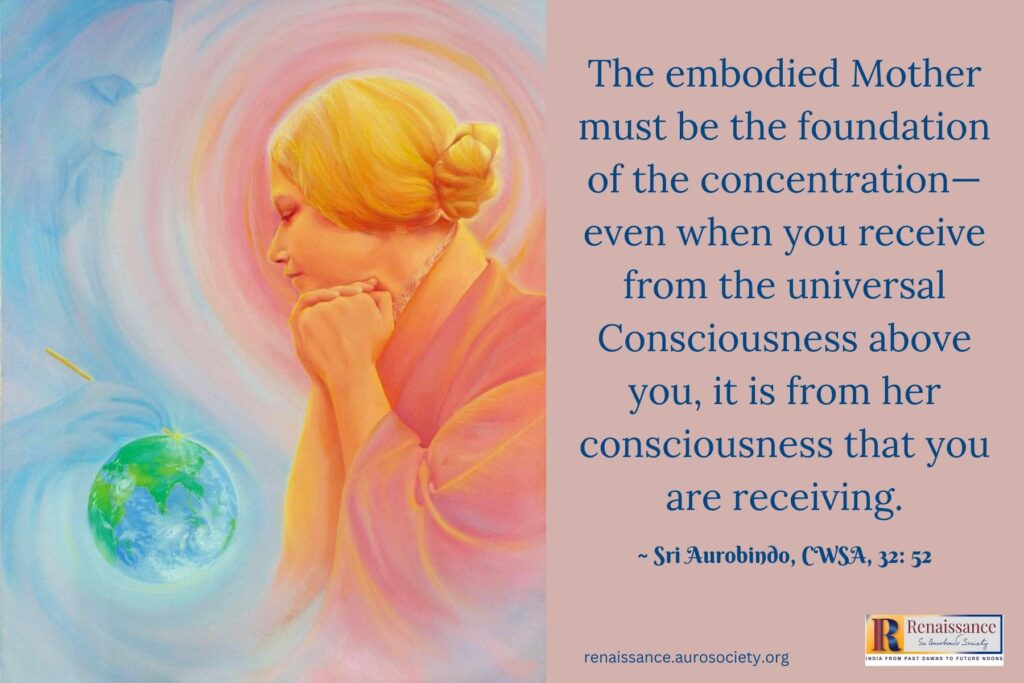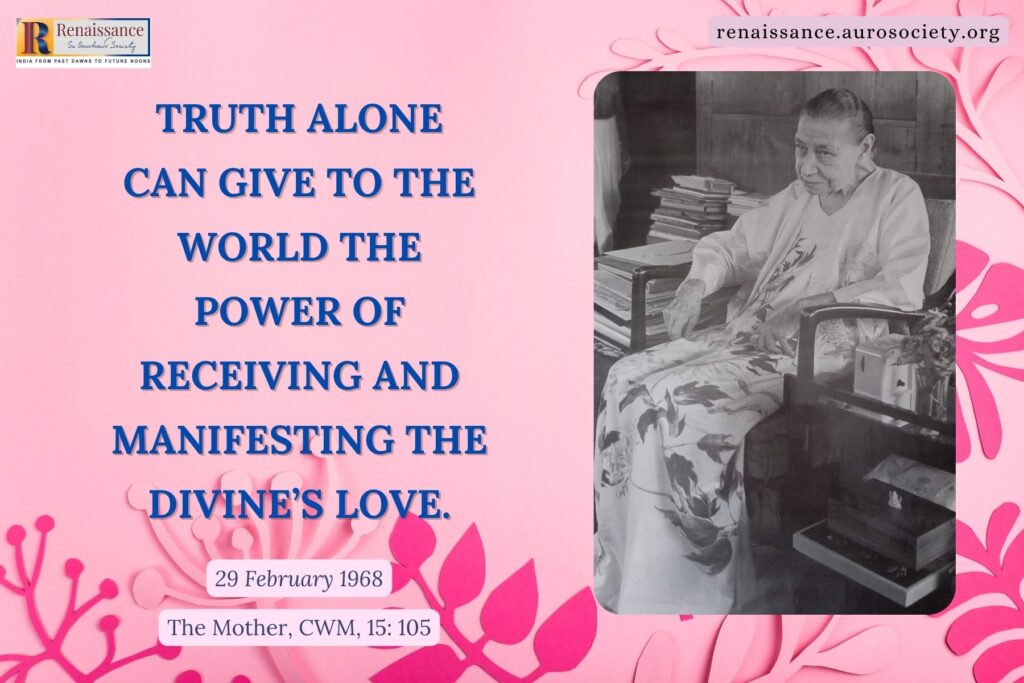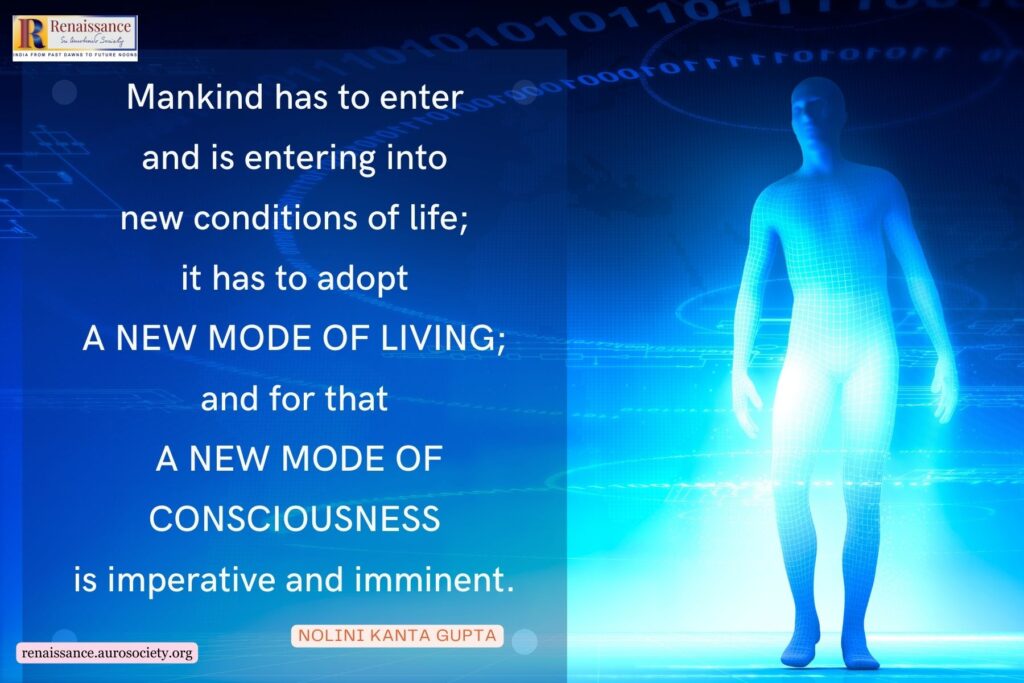Editor’s note: In this writeup, Kireet Joshi gives a brief introduction to Bhartrihari and translates a few verses from his Nitishatakam. This is taken from the book titled “The Aim of Life,” which he wrote as part of a series to be used in teacher education programmes.
Inspired by the great wisdom traditions of the East and West, these books are meant to inspire and educate future teachers. When teachers constantly nourish and nurture their inner being and are inspired to progressively pursue truth, beauty and goodness, children can more easily imbibe these values because of the example and influence of the teachers.
The editors have made a few minor corrections and some formatting changes for the ease of online reading.

Indian tendency toward synthesis and harmony
Harmony, balance and equilibrium marked the ethos of Indian culture in ancient times, and indeed in varying degrees throughout the long and continuous history of India. From time to time, we see India returning to the theme of synthesis, and in every succeeding age the new synthesis assimilated larger and larger numbers of component elements.
It is true that there have been pursuits of exclusive claims and counterclaims, there have also been trenchant oppositions between various schools of thought, and there have also been periods of intolerance and persecutions. But the dominant tendency towards mutual understanding, tolerance and comprehensiveness reasserted itself at the end of every period of conflict and battle.
First, we see the earliest synthesis in the Veda. This was followed by the synthesis of the Upanishad. At a later stage, the Bhagavad Gita provided a new synthesis. The conflict that arose in Indian thought as a result of the growth and development of Buddhism was sought to be resolved by the composite philosophy that we find embedded in the Puranas and Tantras.
Still later, when the conflict between the various schools of Vedanta became acute, we find in Sri Chaitanya a profound and subtle synthesis. At the same time, the coming of Islam in India provided a ground for the emergence of new trends of synthesis, represented by Guru Nanak, Akbar, and a number of Sufi saints and philosophers.
Even today, as we stand at the head of a new age, we have in India an imperative drive towards an unprecedented synthesis, in which both East and West can meet in a symphonic harmony.
Indian view of aims of life
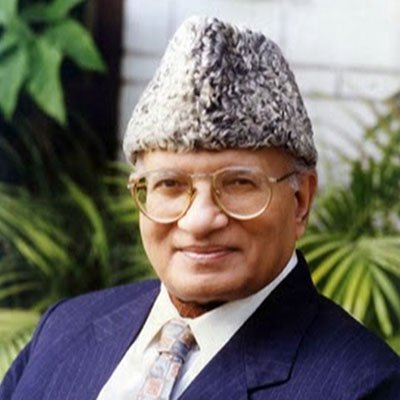
This turn and tendency towards synthesis must be understood if we are not to be baffled by the complex system of ethics that grew and tended to prevail in the Indian society.
Dharma, artha, kāma, and moksha, these four commonly understood words in the Indian aim of life have rich connotations. They indicate that Indian ethics assigned due place to the pursuit of pleasure, kāma, and of wealth or prosperity, artha. But it was also emphasised that these pursuits were to be adequately controlled and governed by the pursuit of dharma. Dharma is the ideal law of the truth and the right and of the harmonic balance of the individual and collective development. At a still higher level, dharma was allowed to be surpassed by an unconditional imperative emerging from unfettered search for spiritual freedom and liberation, moksha.
It is against the background of this synthetic aim of life that we can understand that on the one hand the great representatives of Indian culture came to embody and manifest tendencies towards richness of material life. And on the other hand, they also equally valued overarching detachment and renunciation.
Bhartrihari, a representative of Indian culture
Bhartrihari is one such representative of Indian culture. He was a king and yet a great lover and a consummate poet. The three groups of verses which have been attributed to him are devoted to three fundamental moods and motives of life. Each group consists of hundred verses. All the three combined together have been called shatakatraya, three centuries.
The first century of verses is devoted to the theme of human love and romance, the beauty and joy of sensuous pleasure and ecstasy. The Sanskrit word, shringara, expresses more meaningfully the opulence of ornament, restrained dignity, beauty and delight of love and romance. This century of verses is therefore aptly entitled, shringara shatakam.
The second group of hundred verses is sometimes called “the century of morals”, since the Sanskrit title is niti shatakam.
But the Sanskrit word niti has a more complex sense. It includes not only morals but also policy and worldly wisdom, the rule of successful as well as the law of ideal conduct. The word niti includes in its scope observations of all the turns and forces determining the movements of human character and action. Nitishatakam can, therefore, be best translated as “the century of life”.
The third group of hundred verses attributed to Bhartrihari is entitled vairagya shatakam. It deals with the theme of disillusionment, detachment and renunciation, which are considered to be necessary pre-requisites of the pursuit of liberation, moksha.
For Sri Aurobindo’s note on Bhartrihari, click HERE.
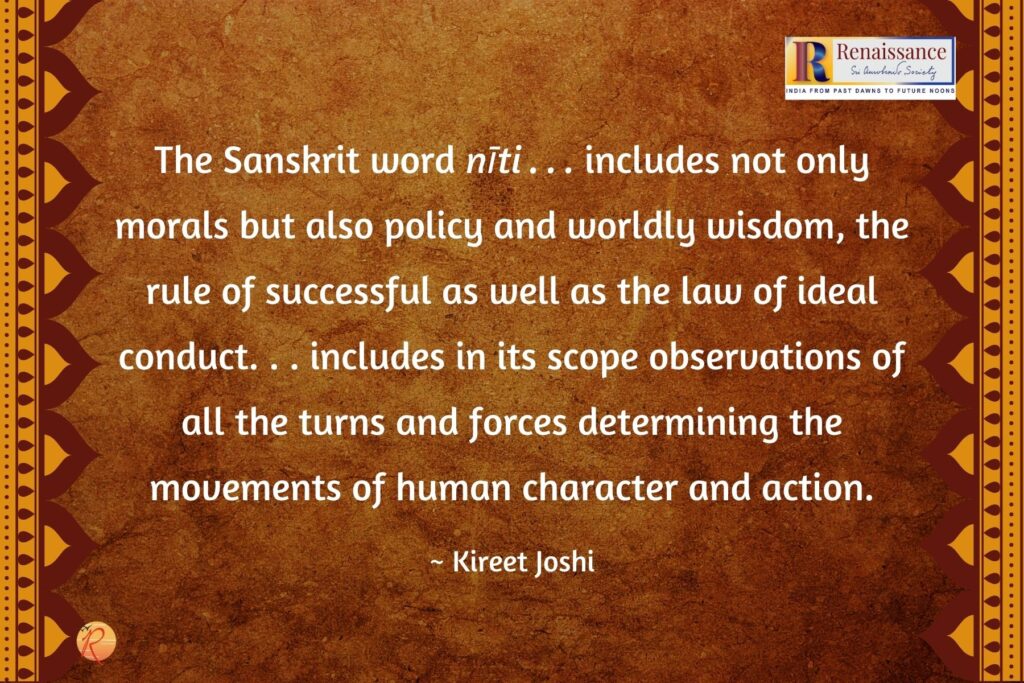
Why Bhartrihari is important?
The few verses presented here are taken from, nitishatakam. Their main theme is the supremacy of learning and character. Readers will find in them the familiar ideas which are deeply interwoven with the ethos of the Indian people.
It is an acknowledged fact that India has laid a greater stress on the pursuit of knowledge rather than on the pursuit of power or wealth. The Indian mind considers purity to be worthier of reverence than anything else. That character is of supreme importance requires no debate in India.
This value-system has grown up and developed from the life and teachings of numberless sages, seers, saints, thinkers, poets and writers. Today, when this value-system is passing through a difficult stage of transition, it is important to go back to some of the original texts in which this value-system has been presented.
This would help us ensure that the value-system relevant to the new age which must emerge, assimilates from the past all that is of fundamental importance to the growth of human personality towards excellence and perfection. In this context a study of Bhartrihari is directly relevant.
Also read:
Sri Aurobindo’s Renderings of Bhartrihari’s Nitishatakam
Who was Bhartrihari?
Of Bhartrihari’s life, we do not know anything with definiteness. We do not even know when exactly he lived and flourished. There are conflicting opinions. Some place him in the 1st century CE, while some others in the 6th or 7th century CE.
According to some, he was a grammarian. While according to others, he was a king. As per one tradition, Bhartrihari was a brother of Vikramaditya. The famous Chinese traveller, I-tsing, who came to India in the 7th century, speaks of Bhartrihari and his works of grammar. According to his account, Bhartrihari must have lived in the first half of the 7th century. But there is evidence to show that the grammarian Bhartrihari lived a few centuries earlier.
According to some, Bhartrihari was a Shaiva Brahmin. But some other believe that he was a Buddhist. There are also interesting tales that make Bhartrihari a disciple of Gorakhnatha, a Shaiva saint, whose dates, too, are quite uncertain.
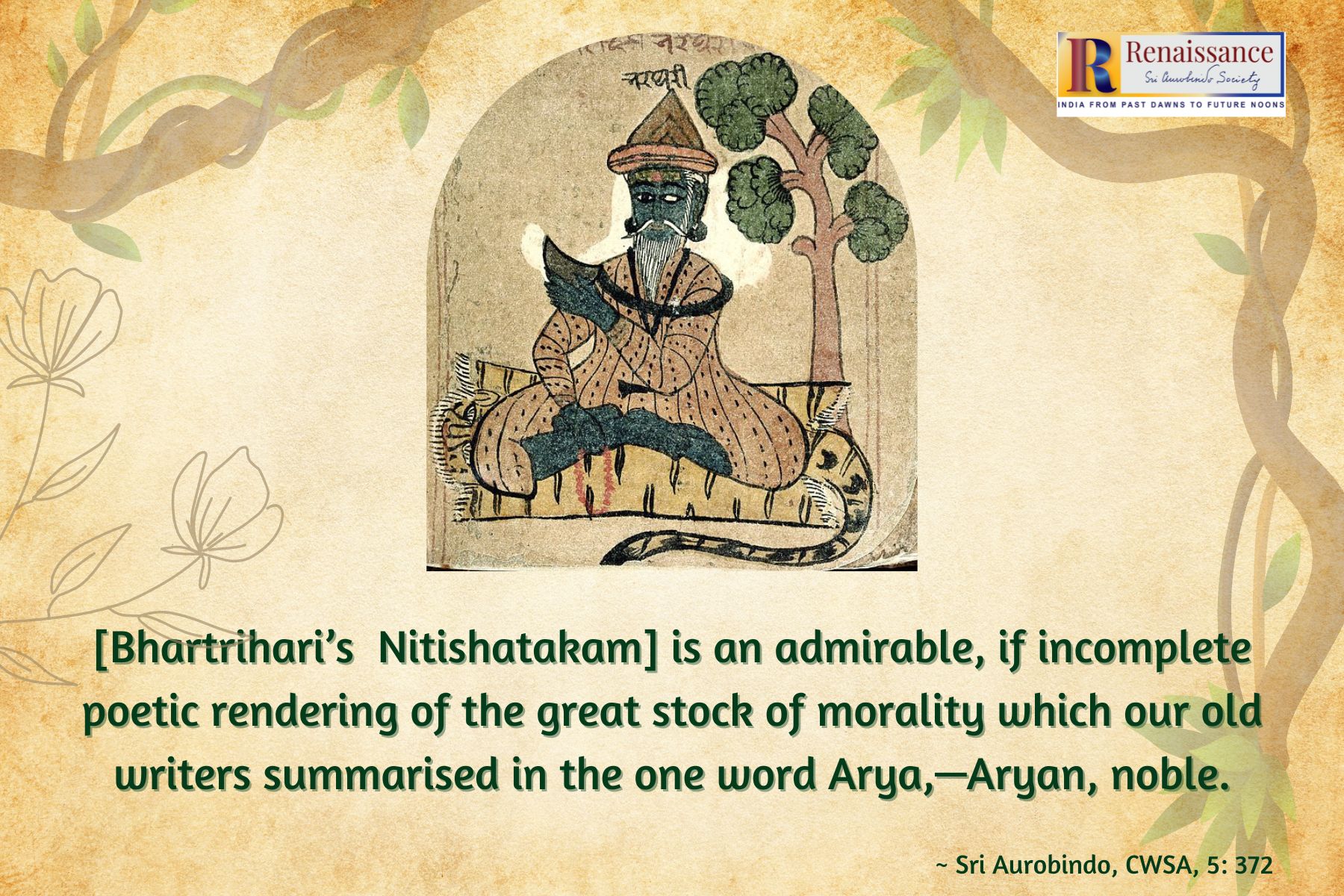
A famous legend
According to a famous legend, Bhartrihari was a great king who loved his queen Pingala intensely. One day a visiting yogin offered to him a fruit which had special quality of eliminating old age and death. The king offered it to his beloved queen.
The queen was, however, in love with somebody else, and she gave the fruit to him. That person was in love with another woman. He gave the fruit to her. She thought that the best person who deserved that fruit was the king. She, therefore, offered that fruit to the king. The king was shocked on receiving the fruit. When he learned the full details of the story, he felt greatly disillusioned and renounced his worldly life to become a sannyasin.
There might be some truth in this legend. There seems to be a reference to this truth in one of the opening verses of nitishatakam, where Bhartrihari says:
She with whom all my thoughts dwell, is averse
She loves another. He whom she desires
Turns to a fairer face. Another worse
For me afflicted is with deeper fires.
Fie on my love and me and him and her!
Fie most on love, this madness’ minister!
A Few Verses from Nitishatakam
Nitishatakam is extremely readable, and it is replete with smiles and epigrams. A number of translations of all the three shatakas from the original Sanskrit are available. The original Sanskrit is relatively simple and full of poetic beauty. Those who have some acquaintance with Sanskrit should read them in the original.
Bodies without mind
One who is devoid of poetry, music, and art is verily a beast, even though he does not grow horns and is without tail. He lives without eating grass, and that is the good fortune for the other beasts.
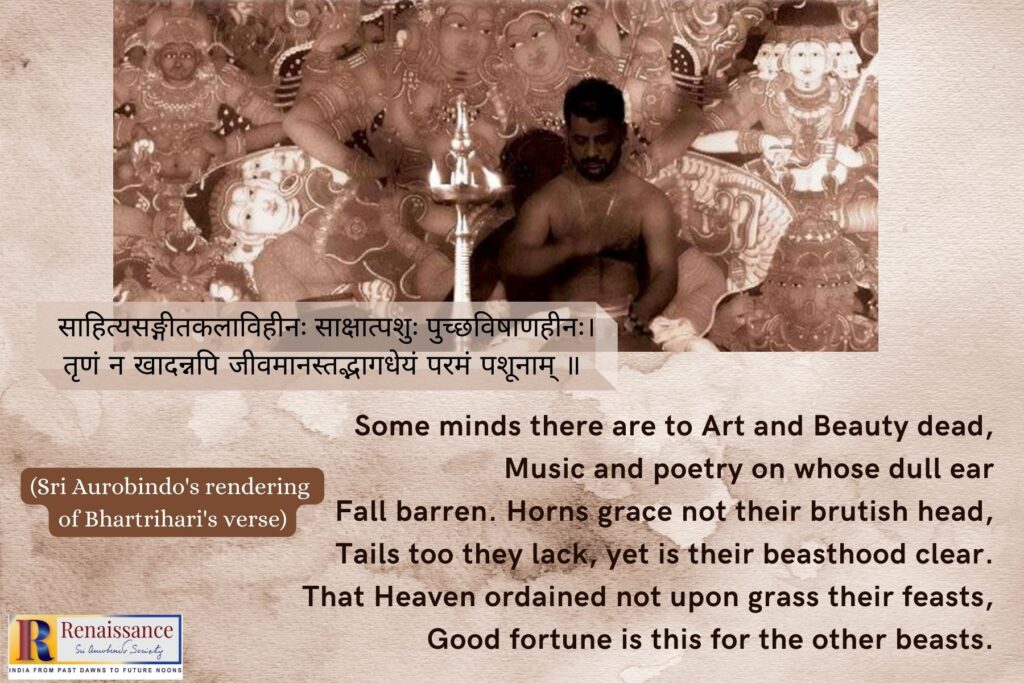
The praises of knowledge
Learning is verily the highest beauty for man; it is a treasure concealed and well protected; it places within his reach enjoyment, honour and happiness; it is an object of reverence even for those who are worthy of reverence; while journeying in strange lands it is a friend; and it is the highest deity; learning is honoured by kings, but not wealth; one destitute of learning is a beast.
Great and meaner spirits
For fear of obstacles, nothing is begun at all by persons who are low-spirited: ordinary people begin and stop when thwarted by difficulties; but the best of men, though repeatedly repelled by adverse circumstances, do not give up what they have undertaken.
Read a few of Sri Aurobindo’s
free renditions in English verse of Nitishatakam HERE.
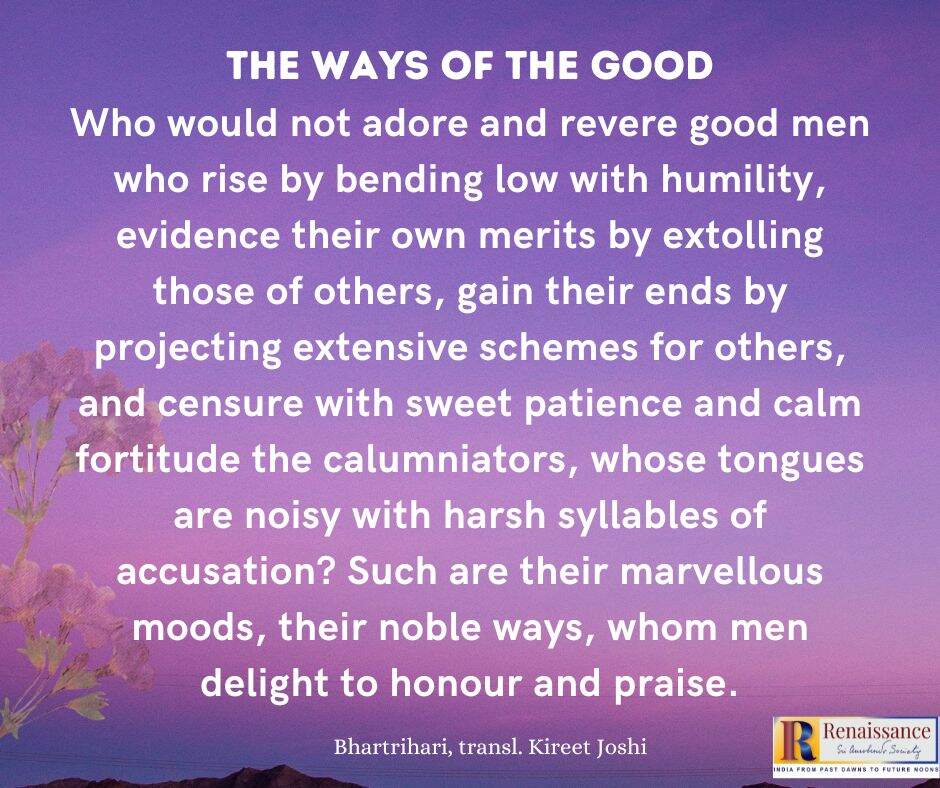
Of benevolent persons
Trees become bent with the harvest of fruits; with newly-formed waters the clouds hang very low; good men with wealth become gentle; this is the nature of benevolent persons.
SEE: Subhāṣita on Humility

From the archives:
Humility, Nobility and the Aryan Character
Ornaments
Courtesy is the ornament of the great, temperate speech of the hero, peace and content of the learned, wrathlessness in hermits, noble expense of the rich, forgiveness of the strong, modesty of the righteous; but good character, which is the root of all these, is the highest ornament of all.
The immutable courage
Those of high soul remain immutable and do not deviate even by one step from the right, whether they are praised or condemned, whether fortune smiles on them or retreats from them, whether death is imminent or is still to come after thousands of years. The virtue of courage of a heroic person cannot be obliterated though he be worried; though pointed downwards, the flame of fire does not point to the ground.
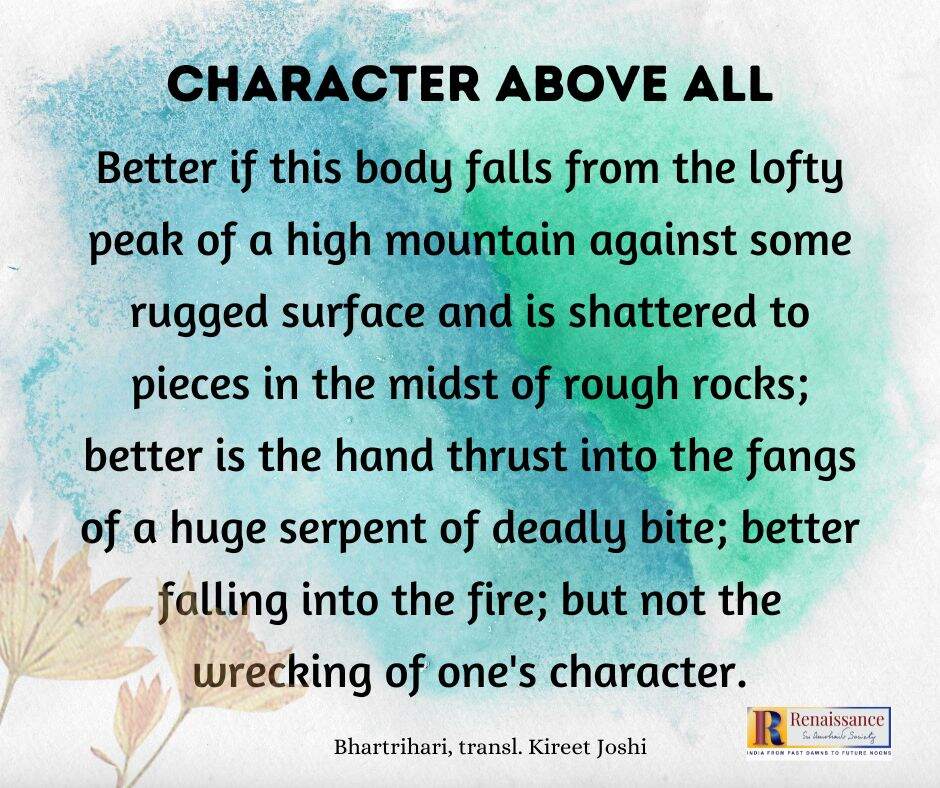

~ Design: Beloo Mehra and Biswajita Mohapatra

